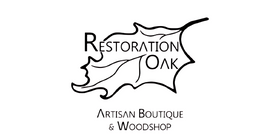Are you intrigued by the idea of stepping back in time and embracing a classic, timeless style? It looks like Edwardian-style architecture can be your ticket to old-world charm. These houses were popularized during the reign of English King Edward VII (1901-1910), and feature bold, distinct exteriors with intricate details that captivate design enthusiasts. In this blog post, we'll explore what makes an Edwardian house unique, from its charming facade all the way to its historic appeal.
What Is an Edwardian-Style House?
Edwardian homes originated during King Edward's reign from 1901 to 1910. While they retain certain resemblances to Victorian homes, they showcase a subtler and more spacious design in some aspects. These homes have a reputation for exuding an air of luxury, often being considered spacious havens ideal for hosting gatherings and events.

Where Did the Edwardian Style Originate from?
These homes are closely tied to the era of King Edward VII of the United Kingdom, who became king following the passing of his mother, Queen Victoria. They were predominantly constructed during the early 20th century. In contrast to the extensive span of the Victorian era, stretching from 1837 to 1901, the Edwardian period was relatively short-lived.
What Is the Difference Between Victorian and Edwardian Houses?
As the Edwardian era succeeded the Victorian period, it's natural to find some similarities between Edwardian and Victorian houses. However, there are distinct differences that set these two architectural styles apart. Edwardian homes departed from the overly intricate and stifling designs of the past. Instead, they embraced a more open and refreshing approach. These homes offer an enhanced feeling of openness, featuring expansive rooms, lofty ceilings, and an overflow of natural light that pours in through their double-hung windows. Notably, Edwardian interiors are characterized by their adaptable layout, emphasizing informal living spaces.

The Architecture of Edwardian-Style Houses
An Edwardian-style house typically has a tiled roof, often made from terracotta. It's all about those quirky, not-quite-symmetrical rooflines with pointy bits, fancy designs like bay windows, some artsy plaster pieces, and sky-high ceilings, those are the elements that make it stand out. When you take a gander at the outside of these updated Edwardian digs, you might spot a soft, delicate color scheme like a fresh coat of white paint. But if you stumble upon an older one, you could stumble upon deeper shades of blue, green, or gray.
Color Schemes
For a touch of modern flair, an Edwardian house can embrace a clean and bright white look as its base color. But if you're in the mood for a bolder statement, you can play around with shades like off-white, olive, yellow, red, pink, indigo, turquoise, and pastel blue, these colors can add a vibrant and eye-catching vibe. While these are more traditional choices, going with a crisp white can also bring in a sleek and contemporary vibe, especially when paired with Edwardian-style fixtures and textures.
Ultimately, the color scheme you choose depends on the unique style you want to infuse into your home. Opting for a basic white palette can effortlessly maintain a fresh and up-to-date atmosphere. You can easily introduce color through furniture, accents, and decorations, even in a more modern home setting.
Variations of the Style
Edwardian houses offer a range of styles, encompassing semi-detached, detached, terraced, bungalows, and flats. These residences vary in their construction and size. Detached homes stand independently, while semi-detached structures share a wall with another house on one side. Terraced residences are linked to adjacent homes on both sides, always spanning two floors. The bungalow style presents a single-level living space. Additionally, flats, often referred to as apartments, are individual residential units nestled within larger buildings.

As we have explored the allure of Edwardian-style houses, it is easy to see why they continue to attract people even a hundred years after their initial emergence. Not only do they have an undeniable aesthetic charm, but also have highly practical features like modern floor plans and expansive windows for ample natural lighting. Along with the classic architectural details that make them so unique, these qualities remain the driving force behind why many consider them the perfect dream home.

Leave a comment